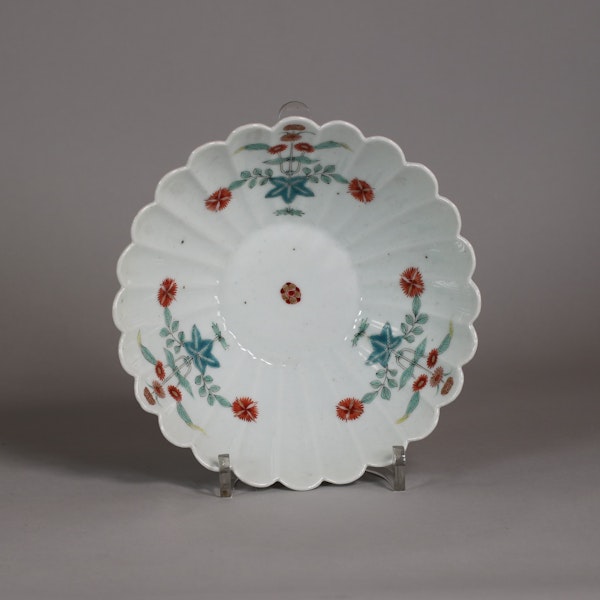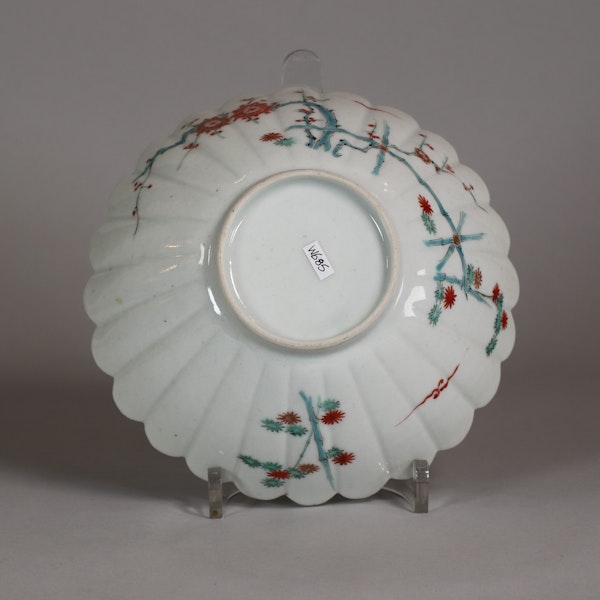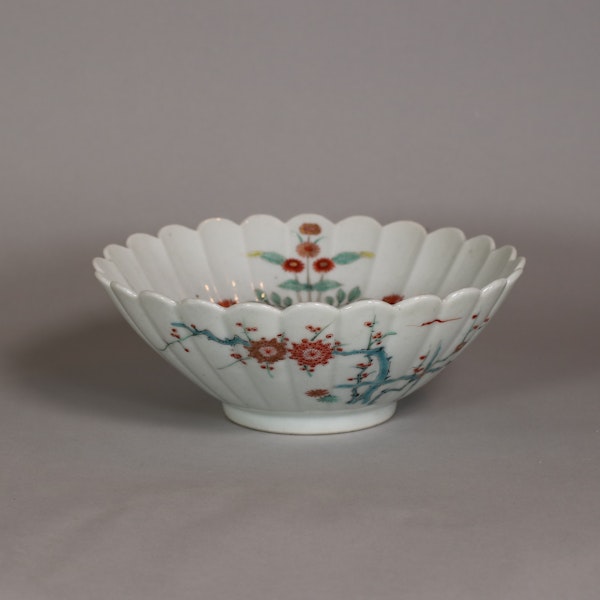Japanese kakiemon lobed saucer, 17th century
Japanese kakiemon lobed saucer, 17th century
POA
Description
Japanese kakiemon lobed saucer, 17th century, of moulded form with scalloped rim, decorated in delicate overglaze enamels to the interior with three stylised floral sprays containing foliage and red and gilt flowers including chrysanthemum issuing from a large vine-type leaf, the centre with a single small flowerhead, the exterior with a design of bamboo and flowering prunus with a cloud scroll in iron red.
Notes: The term ‘Kakiemon’ refers to a style of Japanese ware decorated in delicate overglaze enamels and sometimes underglaze cobalt, first produced in the 17th century around the Arita region of Kyushu. With its milky white porcelain body and designs of figures and flowers, Kakiemon proved particularly popular amongst European buyers. Consequently, European manufactories including Meissen and Chelsea, as well as Chinese kilns capitalised on its commercial success and began to produce Kakiemon imitations. As noted by the authors of ‘Porcelain for Palaces’ (John Ayers, Oliver Impey and J.V.G Mallet), the term is useful in the identification of general style and palette, but should not be understood to mean that these pieces can be attributed to a specific, shared site of production. For further reading, see: Ayers, John, Impey, Oliver, Mallet, J.V.G.. Porcelain for Palaces: The Fashion for Japan in Europe, 1650-1750. London: OCS, 1990; Impey, Oliver. The Early Porcelain Kilns of Japan: Arita in the First Half of the Seventeenth Century. Oxford: Clarendon Press, 1996
| item details | |
|---|---|
| Material and Technique | Porcelain with overglaze kakiemon enamels |
| Origin | Japanese |
| Period | 17th Century |
| Diameter | 16.6cm. (6 1/2in.) |
Product REF: W685






